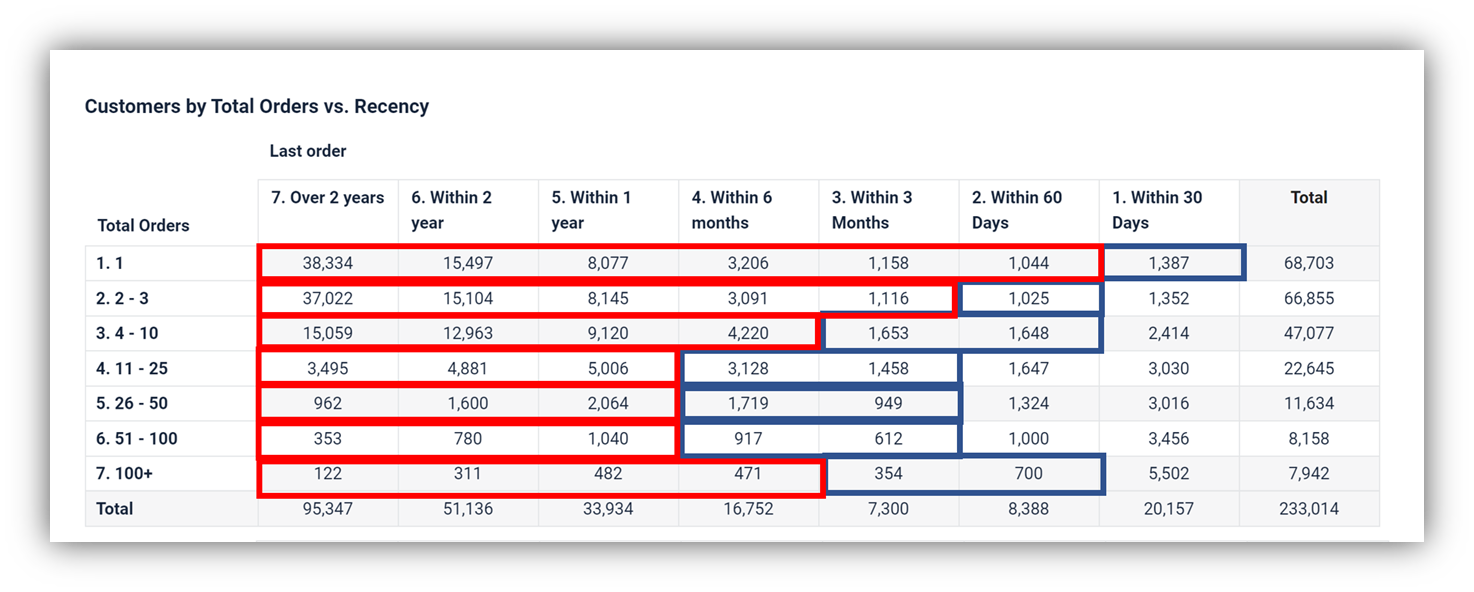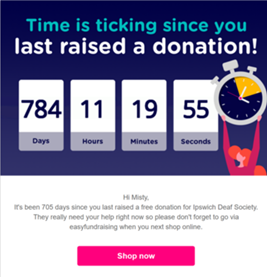Why reactivation campaigns need more than a token gesture
If you work for a consumer facing brand in sectors such as retail, marketplaces or travel where there is a relatively high propensity to buy multiple times, the chances are you are sat on a goldmine of under explored opportunities in relation to reactivating lapsed customers.
I could quote lots of research stats here about what percentage of customers have bought but then lapsed – but typically you could put 80%+ customers in that bucket, usually higher.
Yet at a time when brands are suffering the pain of record acquisition costs with Meta and Google normally only a token and limited amount of energy is put into trying to reactivate these lost customers.
Typically, it seems to consist of a few triggered emails at a certain number of days since last purchase. And you’ll be bundled into the main set of emails if you have opened in the last 120 days. But that’s it – if they don’t respond on the back of the trigger there is no other dedicated activity.
And that is completely mad. These are people who have a proven interest and experienced your offering. Compare that to customers you are trying to reach out to cold via paid media – even if the slither you manage to acquire purchase, the vast majority will only buy once.
What is the potential?
Let’s frame this as reactivation is in effect winning you new customers.
Client X were adding only 12,500 new customers a year and had next to no reactivation activity on a 250K lapsed audience.
What if we reactivated an incremental 5% of those lapsed in a year? Well, that would effectively double our ‘new’ customers without incurring the costs of Meta and Google.
But to get to that 5% we will need a lot more dedicated activity throughout the year and at scale – it’s not a case of trying to add the odd extra trigger here and there.
Why do people lapse?
Reactivation is nearly always one of the first things we do with a new client because of this potential large win. Yet the typical question we get asked by the client is something along the lines of ‘Aren’t they lapsed because they don’t need us anymore?’ or ‘What if they just had a bad experience?’
Most of the time these customers have just forgotten about you or fallen out of habit. One reactivation research piece we were involved in with surveys and phone research revealed more than 70% could be put into the ‘Forgot’ bucket.
Sure, there will be a teeny tiny fraction who had a bad experience – but it won’t be more than that or you’ll be struggling to stay in business anyway. And yes, some will have grown out of you or got differing needs – but we are talking at such scale there will be plenty red-hot customers to reawaken.
Aren’t we emailing them anyway?
The other pushback we get from clients is the fact they are emailing them anyway as part of their BAU campaigns.
These will help with reactivation – but they aren’t targeted in that way. By having specific promotions and personalised campaigns addressed at scale we can make a more dramatic impact.
Where to start? Data.
The first port of call is to get an RFM chart out showing customer numbers of recency vs. a value measure such as number of purchases.

Different creatives, channels and promotions will work for different groups while this also allows you to forecast potential return and prioritise – they won’t all return at the same rate, and those with more purchase frequency are of course likely to spend more when they do return.
Then you also need to consider how many are subscribed to email – what about direct mail campaigns to the high value lapsed? You won’t actually be able to reach all by email so while this is an email marketing site we should highlight the potential of good old direct mail to help us here.
And of course, you need to consider what time period makes someone lapsed by looking at the probability of that person returning. This will differ based upon recency and frequency – one-timers tend to lapse very quickly if they don’t make that 2nd purchase within a short period of time, your middle bunch of customers will be longer, but then your very best customers tend to be quick again.
It's always wise to avoid being sucked into the trap a lot of analysts obsess over. They’ll look at when there is a very high probability of them lapsing – say 80-90% chance of not coming back so any incentive you serve won’t cannibalise customers who would return anyway. The problem with this is it can push lapsed times to >1 year by which point any campaign naturally becomes less effective.
Finally, a worthwhile exercise is to look at what are they most likely to buy when they do come back. One way of doing this is take all the lapsed customers who came back of their own accord – what did they buy? How did that compare to what they have bought before in terms of brand, price point, category and other attributes. This then gives you the intelligence to help you with personalising your reactivation messages.
Creative & Promotion
We want to aim for a whole series of different creatives. I usually brainstorm with clients 10-12 different approaches that will work across a mix of segments. Depending on the nature of the brand we will want something like 6-9 pieces of reactivation activity across the year.
For high frequency customers we might use a personalised story approach a bit like Spotify Unwrapped, reminding them about the great experiences they’ve had with a ‘gift’ of an offer.

Or maybe we simply focus on what they’ve bought before and highlight other options. Years ago in my brand days we did a 20% off [[BRAND]] campaign, dynamically personalising based upon the last brand they bought from. The code would work on anything but simply personalising the subject line, hero and products had much more cut through.
Personalisation is your friend here at creating extra impact.
A useful technique can be to use personalities in your business – maybe your founder. Emails from real people have more impact.
Or maybe we might even have an animated timer showing how long it’s been since they used the service.

Whatever we arrive at it’s always based upon a range solid persuasion techniques, and focussing on creative that is going to stand-out amongst all the other emails you’ve sent.
Incentives for lapsed customers is not essential but clearly helps. Again, we might use a range of these, and increase the level of discount by probability of returning, working harder on those long-lapsed customers. Using unique coupon codes here is essential to avoid your best customers getting hold of these codes.
Execution & Measurement
To achieve the scale we want from reactivation activity we always recommend we set aside fixed time in the calendar for this activity rather than trigger. This gives you far more reach as you can use the whole lapsed database each time, and you can ensure there is no promotion clashes. These can be ideal for scheduling when you want a promo free homepage but still want to keep revenue ticking along.
Ideally you want a reactivation promo booked in every 6-8 weeks which is why we try and generate so many different creative ideas. But after the first run you can reuse these anyway.
We also keep a control group back. Maybe 10%, maybe more depending on the likely responsiveness and size of the database. This allows us to see how each segment responded compared to natural returning shoppers – and you will always have a decent chunk of these.
Using that insight not only gives you much better confidence in the incremental uplift and the direct revenue generated. You will see that even those in the control group come back so you can’t rely on counting everyone that buys after receiving the emails.
Ideally this should be done looking at response between test and control by RFM segment. You might find that there is little value going back to those who haven’t shopped for 2 years, or maybe there isn’t much of an incremental difference at more recent lapsed shoppers who are always going to be the most likely to return without the need for activity.
This also allows you to refine targeting in future which is especially important for channels such as Direct Mail or SMS where costs come into consideration.
And finally, you keep an eye on both test and control because what you really want to see is further purchases from the test group. One of our clients showed an initial incremental uplift of around £20K from their reactivation campaign, but that grew to > £500K over the course of the next 6 months as they continued to shop.
Final Words
Reactivation campaigns are a crucial yet often overlooked strategy for consumer-facing brands in sectors like retail, marketplaces, and travel, where acquisition costs are soaring. These campaigns can unlock significant value from lapsed customers who already have a proven interest in your offerings. By moving beyond minimal efforts, such as a few triggered emails, and instead implementing targeted, data-driven strategies with personalized content and multi-channel approaches, brands can dramatically increase their customer base without incurring high acquisition costs.
 Photo by Ram Kishor on Unsplash
Photo by Ram Kishor on Unsplash

 How to resolve AdBlock issue?
How to resolve AdBlock issue? 
 Sean Duffy is founder of Segmentum, an eCRM strategy & implementation agency, and Reignite, a real-time email personalisation platform.
Sean Duffy is founder of Segmentum, an eCRM strategy & implementation agency, and Reignite, a real-time email personalisation platform.